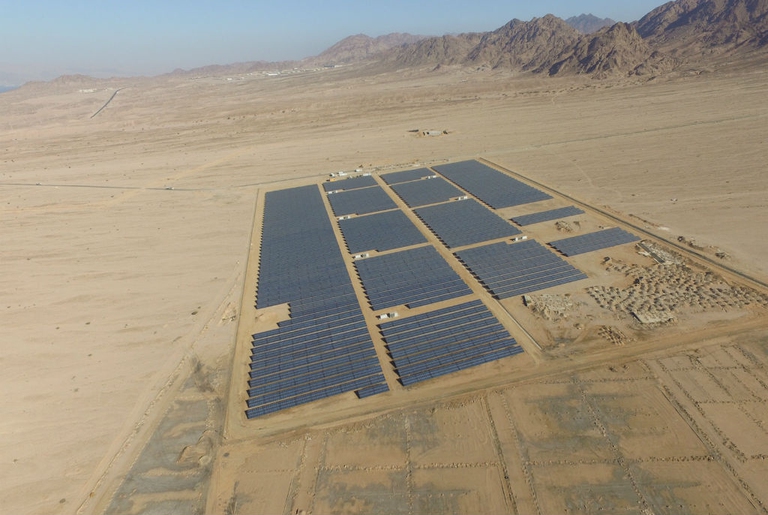
A group of experts in Tokyo suggested pouring radioactive water from Fukushima into the open sea. A marine biochemist explains the consequences of this absurd decision.
Jordan gives green light to build 12 solar plants. Once completed, they will produce 200 MW of energy.
The Middle East is investing heavily in renewable energy. And Jordan is particularly active in the photovoltaic field, thanks to the go ahead of the country’s Ministry of Energy: 12 plants with capacity to produce 200 MW of solar energy will be built by foreign companies. And that’s not all, 1.8 GW will be installed in Jordan by 2018.
These include a plant that is under construction in the city of Ma’an, about 200 km away from the capital Amman: 73,320 PV modules that will produce almost 47 million kWh every year and reduce CO2 emissions by about 25,000 tonnes yearly. Realised by the Italian company Enerray and its Saudi partner Desert Technologies, the plant will be part of a network of solar plants that will connect Morocco to South Arabia:
“We’re proud of the development and investment work with our partner Enerray Spa, and we’re enthusiastically entering the phase of realisation of the plant”, stated Nour Mousa, CEO of Desert Technologies. “This project is the first to use a network of more than 1.5 GW in the Middle East and North Africa, from Morocco to Saudi Arabia”.
“This project demonstrates once again that PV represent the simplest, the most sustainable and the most affordable energy source for developing countries as well”, said SMA Manager Valerio Natalizia. “The close collaboration with Enerray makes us proud and demonstrates that once again our companies are powerfully facing international challenges”.
The country’s new energy policy is aimed to increase the use of renewable energy: the Government declared that renewable energy will reach at least 10% of total supply by 2020 in Jordan. An example is the building of a 10 MW solar plant and a 500 wind plant in the city of Mafraq.
Siamo anche su WhatsApp. Segui il canale ufficiale LifeGate per restare aggiornata, aggiornato sulle ultime notizie e sulle nostre attività.
![]()
Quest'opera è distribuita con Licenza Creative Commons Attribuzione - Non commerciale - Non opere derivate 4.0 Internazionale.
A group of experts in Tokyo suggested pouring radioactive water from Fukushima into the open sea. A marine biochemist explains the consequences of this absurd decision.
A federal court in Washington, D.C. has struck down the Dakota Access Pipeline, following years of campaigning by the Standing Rock Sioux tribe.
The Scottish island of Eigg is self-sufficient for its energy needs, relying almost entirely on renewable sources, especially thanks to a coordinated community effort.
President Magufuli in unmovable in going ahead with the Stiegler’s Gorge dam despite conservationists’ warnings of the damage it will cause the Selous Game Reserve’s ecosystem and wildlife.
A large dam along the Luangwa River in Zambia would have posed a serious risk to local people and wildlife, leading hundreds of thousands to oppose it. A call to which the government responded by halting plans to build it.
The first one megawatt solar power plant in the Chernobyl exclusion zone has become operational. This is the first step in a renewable energy development project promoted by the Ukrainian government in the area.
A tanker exploded at a gas and petrol station in Nigeria’s Nasarawa state on the 10th of September, killing 35 people and leaving some burned beyond recognition; 3 citizens had several spine and brain injuries, 2 of them are still on Intesive Care Units. Fela Habila , a local singer, is now stable and out of danger but
The largest tidal power plant in the world will be built in the Larantuka Straits. It will serve 100,000 people and help overcome some of the challenges of energy provision in Indonesia.
Robben Island’s solar energy micro-grid project will produce almost one million kilowatt hours of electricity annually, significantly reducing the cost and impact of buying diesel.









